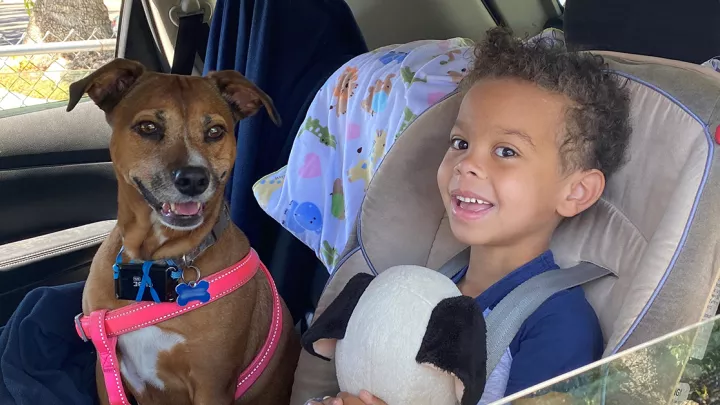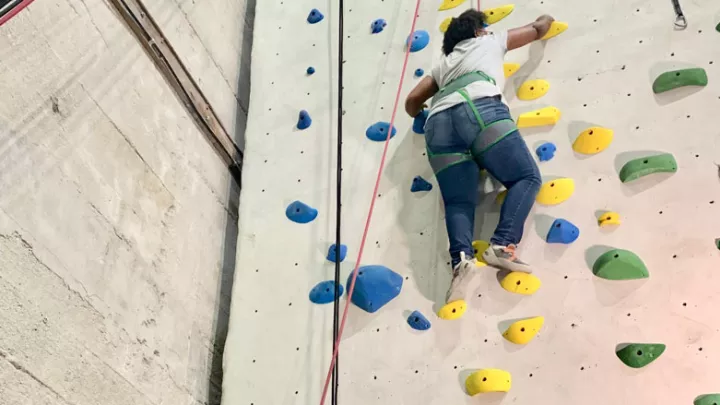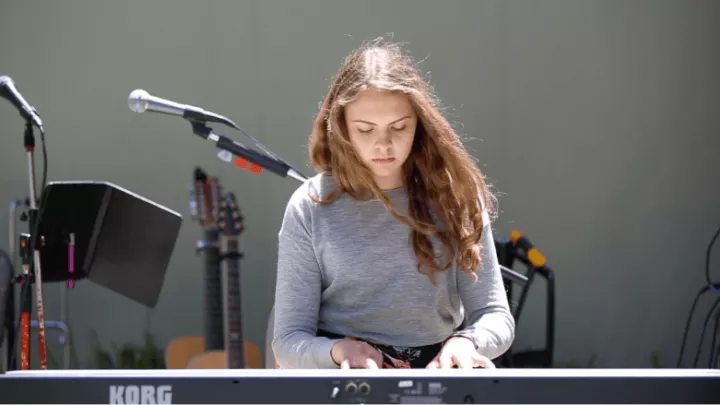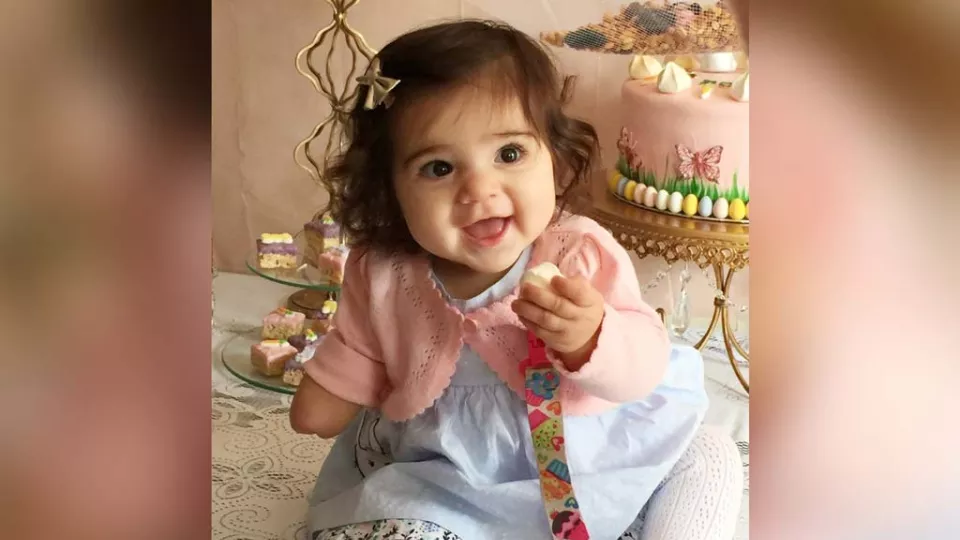
Unstoppable Mila Doesn’t Let a Limb Difference Get in the Way
Like many kids her age, 4-year-old Mila loves to swim, draw, play with the family’s dogs and ride her tricycle. These things bring her joy, as evidenced by her sweet smile and her squeals of excitement.
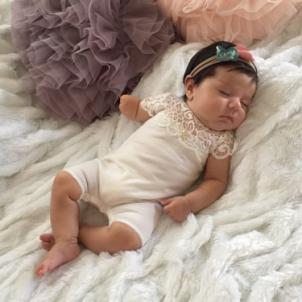
“She is the most loving, friendly and active child,” says Mila’s mom, Ana, in awe of her daughter who was born with an upper limb difference. “She rules the house! She is always on the go and it’s so amazing to see how strong and determined she is to do everything by herself.”
Ana and her husband Mark first learned of their daughter’s limb difference at her 20-week prenatal exam. The ultrasound revealed that Mila had symbrachydactyly, a rare congenital condition that affects one upper limb. In Mila’s case, she was missing her right hand and there was no growth on her right arm past the elbow.
“It was a big surprise and hard information to receive,” recalls Ana. “We started wondering if she would have other health issues like with her heart or her kidneys. We did another ultrasound and the doctor said her organs looked fine.”
Hearing that was reassuring to Ana, but the news that her child would be born with a physical difference was weighing heavy on her mind. While still pregnant, Ana was referred to Nina Lightdale-Miric, MD, Director of the Hand and Upper Extremity Orthopedic Program in the Jackie and Gene Autry Orthopedic Center at Children’s Hospital Los Angeles.
The ‘perfect’ girl
“In the United States, it is estimated 1 in every 2,500 babies born each year will have an upper limb difference,” Dr. Lightdale-Miric says. “It was important for me to let Ana and her family to know that children born with symbrachydactyly are healthy and their baby would be able to do everything she needs and wants to do. Our team at CHLA delivers world-class care if surgery is indicated and that we would be with them every step of the way to navigate living with a hand difference.”
“She put us so at ease and she assured us Mila was going to be a great child,” Ana says. “Just looking at my beautiful baby girl, I cannot thank Dr. Lightdale-Miric enough because her words were so true—Mila is just perfect.”
Since she didn’t know anyone who had a limb difference, Ana knew that she had a lot of learning to do. Little did she realize that Mila would be the one doing the teaching.
“Most of our learning came from her,” Ana says. “Before she was born, my worry was, ‘How will she crawl? How will she hold a cup? How will she brush her hair?’ But once she was born, she showed me she can do everything. It started when she was a few months old and wanted to feed herself and insisted on holding her own bottle.”
A welcoming community
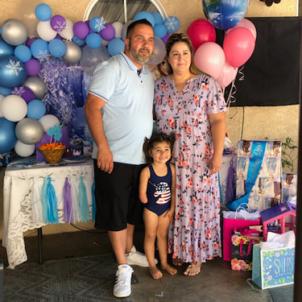
As the years have gone on, when Mila faces a challenge she persists until she gets it. Most recently, Mila’s art endeavors have given her some difficulty.
“When she started using markers or crayons to draw or color, she had a hard time because I think innately she is a ‘righty,’” Ana explains. “She would try to put the marker on her right arm instead of holding it with her left hand. Every day she would try, and every day she would say, ‘I want to do it again.’ Now, she’s finally mastered how to use her left hand when she wants to draw!”
While Mila’s arm hasn’t required any medical interventions, she does have regular checkups with Dr. Lightdale-Miric to review developmental milestones, discuss the exploration of adaptation—potentially prosthetics—and access to resources through CHLA like the CATCH (Center for Achievement of Teens and Children With Hand Differences) program. Established by Dr. Lightdale-Miric 10 years ago, CATCH unites CHLA families whose children have upper limb differences. Within the group, Ana receives support and Mila gets to interact with kids who look like her. Later, Mila will mentor other new members.
“Being a part of the CATCH community has let us know that we are not alone. It’s comforting to meet and talk with moms who are experiencing the same things that I am,” Ana says. “And Mila loves seeing the other kids in CATCH. She shows them her arm that she nicknamed ‘Tatik,’ which in Armenian means ‘paw.’ We participated in a group session recently and Mila was so excited. She said, ‘Look! That girl has a Tatik just like me!’”
Born this way
Outside the home, Mila has always been comfortable with herself despite strangers looking at her or asking her about her arm.
“As a parent, I get frustrated and I want to say something when people stare. But then I think to myself, ‘Take a deep breath,’” Ana says. “If I get upset she will learn that from me and then she will get upset and carry it with her when she’s older and react that way. So I’ve told Mila, “If someone asks you about your arm, you can answer them if you want.”
Because of her healthy self-confidence and friendly demeanor, Mila doesn’t shy away from conversations. In fact, she drives them.
“I can’t help but be proud of her,” Ana says, smiling. “She knows how to handle herself better than some adults. When someone asks about her arm, she just tells them, ‘I was born this way and I’m fine.’”
